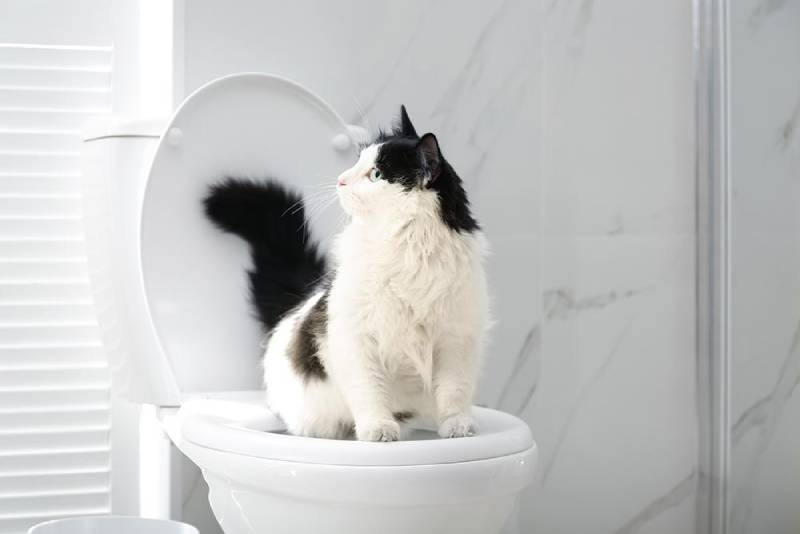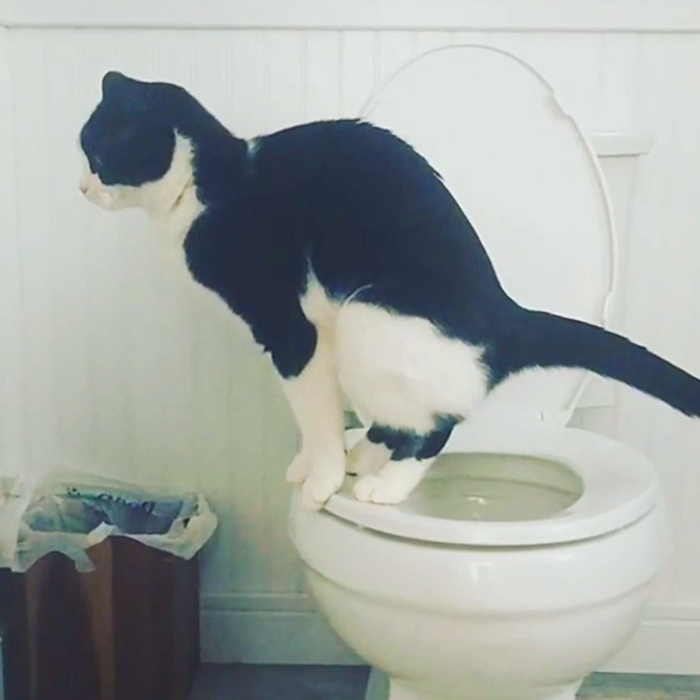This great article in the next paragraphs about Should you flush animal waste down the toilet is highly remarkable. You should take a look.

When it comes to getting rid of waste, particularly animal waste, many people typically turn to the practical option of flushing it down the toilet. However, this seemingly simple solution can have serious repercussions for the environment and public health. In this write-up, we'll explore why flushing pet waste down the bathroom is a bad concept and provide alternate approaches for proper disposal.
Intro
Correct waste disposal is important for keeping ecological sustainability and public health. While it might appear harmless to purge animal waste down the commode, it can bring about various problems, both for the environment and human health.
Threats of flushing pet waste
Ecological effect
Flushing animal waste introduces harmful bacteria and virus into waterways, which can negatively influence marine environments. These virus can pollute water resources and harm marine life, interrupting fragile ecosystems.
Public health concerns
Animal waste consists of dangerous microorganisms such as E. coli and Salmonella, which can present significant health and wellness dangers to human beings. Flushing animal waste down the commode can infect water products, bring about the spread of diseases and infections.
Alternatives to flushing
As opposed to flushing pet waste down the toilet, there are a number of different disposal approaches that are more environmentally friendly and hygienic.
Composting
Composting pet waste is an environmentally friendly way to get rid of it. By composting, website raw material is broken down into nutrient-rich soil, which can be utilized to feed gardens and plants.
Garbage dump disposal
Disposing of animal waste in a landfill is another choice. While not as eco-friendly as composting, it is a safer choice to flushing, as it prevents the contamination of water sources.
Pet garbage disposal systems
There are specific animal waste disposal systems readily available that safely and hygienically get rid of pet waste. These systems commonly make use of enzymes to break down waste and remove odors.
Actions to proper pet waste disposal
To ensure appropriate disposal of animal waste, follow these steps:
Scooping and nabbing waste
Regularly scoop and bag animal waste making use of biodegradable bags. This prevents waste from polluting the environment.
Using assigned waste bins
Dispose of bagged pet waste in designated waste containers, such as compost bins or garbage dump bins. Stay clear of flushing it down the toilet at all prices.
Cleaning litter boxes and pet dog locations routinely
Frequently tidy litter boxes and pet locations to prevent the buildup of waste and microorganisms. Use pet-safe cleansing items to keep health.
Benefits of proper disposal approaches
Embracing proper disposal approaches for pet waste uses several benefits:
Lowered environmental pollution
Appropriate disposal approaches minimize the risk of environmental pollution, safeguarding waterways and communities from contamination
Minimized danger of water contamination.
By preventing flushing pet waste down the commode, the danger of water contamination is significantly lowered, protecting public health.
Improved sanitation and health
Appropriate disposal approaches promote much better sanitation and hygiene, producing a more secure atmosphere for both human beings and pets.
Conclusion
In conclusion, flushing pet waste down the toilet is harmful to the environment and public health. By taking on alternative disposal approaches and complying with appropriate waste administration techniques, we can minimize the negative impact of pet waste and add to a cleaner, much healthier world.
What To Do With Dog Poo – The Do's And Don'ts Of Disposing Of Faeces
Dog poo bins
Some councils provide dedicated dog waste bins in popular dog-walking areas that can take dog poo that has been bagged but you can legally dispose of dog waste in any public litter bin, as long as it is securely bagged. This also applies to your wheelie bin at home.
Do not flush
Water companies do not recommend flushing dog faeces down the toilet because certain parasites can survive the water processing treatment and are potentially harmful to humans. You should also never consider flushing dog poo that has been bagged down the toilet as the bags will not break down and instead create severe blockages in the sewage system.
In the woods
The Forestry Commission promotes a ‘stick and flick’ method for dealing with waste in the woods. This means finding a stick and using it to flick any poo from off the path so that it is out of the way of other walkers. You could also bury it as long as it is not in an area where there might be livestock.
Livestock
Parasites found in dog poo can be transmitted to livestock if they inadvertently eat infected faeces that has been left on grazing land. This could result in the death of sheep or abortion in cattle so you should always make sure you pick up your dog’s waste in fields where livestock could be present.

Frequently tidy litter boxes and pet locations to prevent the buildup of waste and microorganisms. Use pet-safe cleansing items to keep health.
Benefits of proper disposal approaches
Embracing proper disposal approaches for pet waste uses several benefits:
Lowered environmental pollution
Appropriate disposal approaches minimize the risk of environmental pollution, safeguarding waterways and communities from contamination
Minimized danger of water contamination.
By preventing flushing pet waste down the commode, the danger of water contamination is significantly lowered, protecting public health.
Improved sanitation and health
Appropriate disposal approaches promote much better sanitation and hygiene, producing a more secure atmosphere for both human beings and pets.
Conclusion
In conclusion, flushing pet waste down the toilet is harmful to the environment and public health. By taking on alternative disposal approaches and complying with appropriate waste administration techniques, we can minimize the negative impact of pet waste and add to a cleaner, much healthier world.
What To Do With Dog Poo – The Do's And Don'ts Of Disposing Of Faeces
Dog poo bins
Some councils provide dedicated dog waste bins in popular dog-walking areas that can take dog poo that has been bagged but you can legally dispose of dog waste in any public litter bin, as long as it is securely bagged. This also applies to your wheelie bin at home.
Do not flush
Water companies do not recommend flushing dog faeces down the toilet because certain parasites can survive the water processing treatment and are potentially harmful to humans. You should also never consider flushing dog poo that has been bagged down the toilet as the bags will not break down and instead create severe blockages in the sewage system.
In the woods
The Forestry Commission promotes a ‘stick and flick’ method for dealing with waste in the woods. This means finding a stick and using it to flick any poo from off the path so that it is out of the way of other walkers. You could also bury it as long as it is not in an area where there might be livestock.
Livestock
Parasites found in dog poo can be transmitted to livestock if they inadvertently eat infected faeces that has been left on grazing land. This could result in the death of sheep or abortion in cattle so you should always make sure you pick up your dog’s waste in fields where livestock could be present.

I discovered that review about Don't Flush Your Pets Poo Down The Loo, Vet Warns while doing a search on the search engines. Do you know someone else who is occupied with the niche? Be sure promote it. I treasure reading our article about Don't Flush Your Pets Poo Down The Loo, Vet Warns.
Call Today